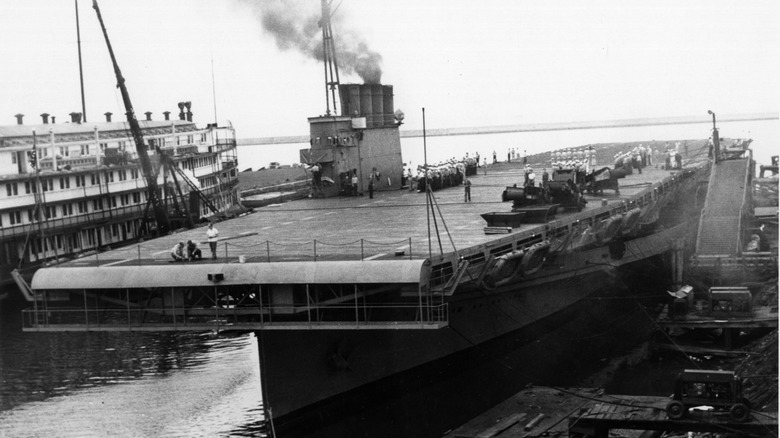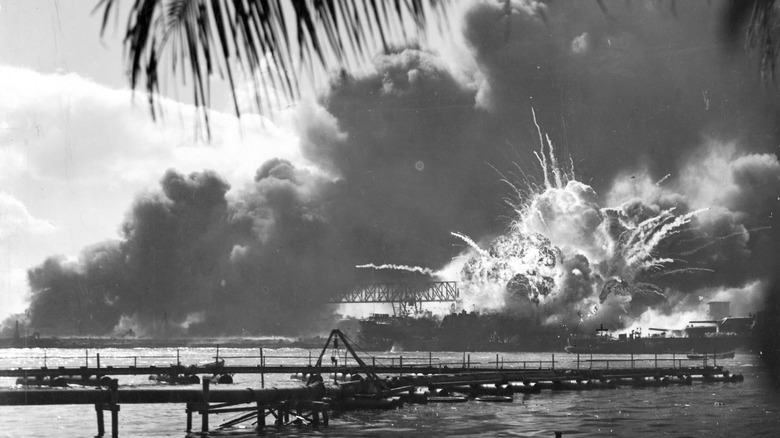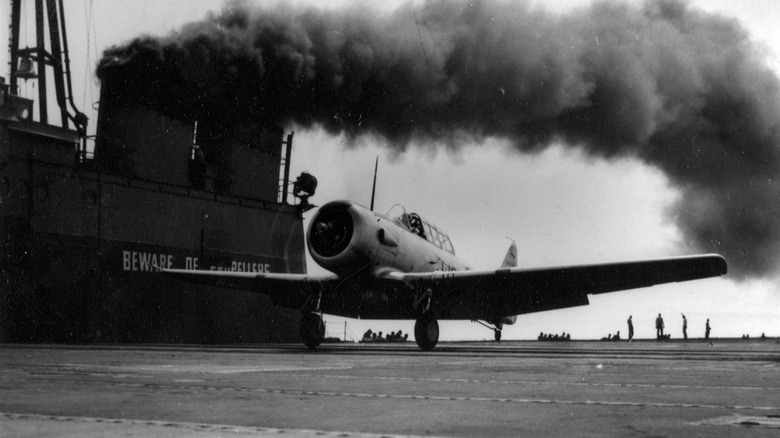WWII History: Why Were Aircraft Carriers Stationed In The Great Lakes?
While the 20th century brought humanity some of its most significant innovations across numerous fields, such as our most impactful modern invention, the internet, it was also marked by one of the darkest periods in modern human history: the Second World War. Each side in this terrible conflict was eager to gain the upper hand, which meant having the best weapons, gear, and troops, as well as topographical advantages. On the American side, the military had gathered some of the most talented minds of the century, from seasoned veterans to scientists eager to make an impact in the war.
However, it's common knowledge that war is usually an insatiable machine, with an appetite for new gear and troops at every turn. While those with blessed minds and hands worked on vehicles and weapons, refining war tactics, a part of the U.S. Navy was busy training new carrier pilots in the Great Lakes. But how did things get to this point, and why couldn't the military utilize the vast ocean waters surrounding the country's outer borders?
It only took one hour and fifteen minutes
Let's go back to one of the most devastating moments of World War II — one of the most devastating one hour and 15 minutes, to be exact. While the war itself involved many countries, the situation between the U.S. and Japan had been simmering for a while. Over the few decades prior to the war, Japan had been attempting to expand its empire into the rest of Asia and the Pacific by establishing colonies. Expansion equaled colonies, which would, in turn, bring resources to the country. As you would expect, Japan's efforts, especially when it came to Asian natural resources and Chinese markets, pitted it against the U.S.
Japan had established a prominent presence in the northern Chinese province of Manchuria, even influencing its governance and changing its name. These events, along with many others such as sanctions from the U.S., were fuel to the fire that ultimately resulted in the chaos that engulfed the island of Oahu on December 7, 1941. It had been a calm morning before the skies darkened with 353 Japanese aircraft in what would be known as the attack on Pearl Harbor.
The USS Sable and USS Wolverine
The attack was devastating, as you already know, with casualties reaching well over the 3,300 mark. American war gear and vehicles also saw significant damage, from several battleships being lost or destroyed to dozens of planes being taken out by the Japanese fleet. Following the attack, and with the U.S. officially entering World War II, the U.S. Navy found the need to increase the number of its carrier-qualified pilots. Enemy vessels patrolled the ocean waters, making the waters unsafe for training. So, the Navy chose the next best bet: the Great Lakes.
Captain R.F. Whitehead was at the forefront of choosing the Great Lakes as suitable training waters. Since the pilots undergoing the training program were to be carrier-qualified, actual carriers were required for the program. However, all the Navy's carriers were already out for the war. To solve this issue, two passenger steamships were converted and commissioned with the names USS Sable and USS Wolverine.
Wolverine, which might be the strangest warship ever used by the U.S. Navy, was the first to enter service, while Sable joined some months later. The Navy named these two carriers the Cornbelt Fleet and saw an impressive 15,000-plus aviators successfully train and graduate into carrier-qualified pilots, all within the safety of the United States of America.


